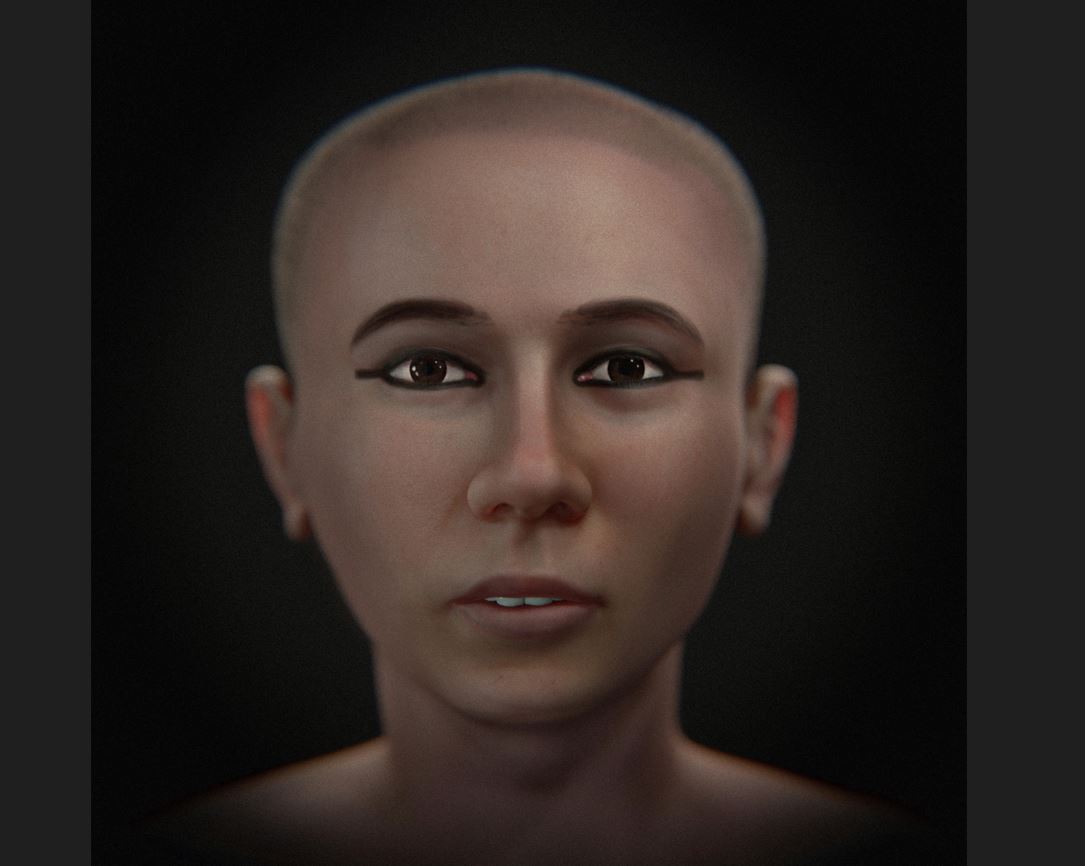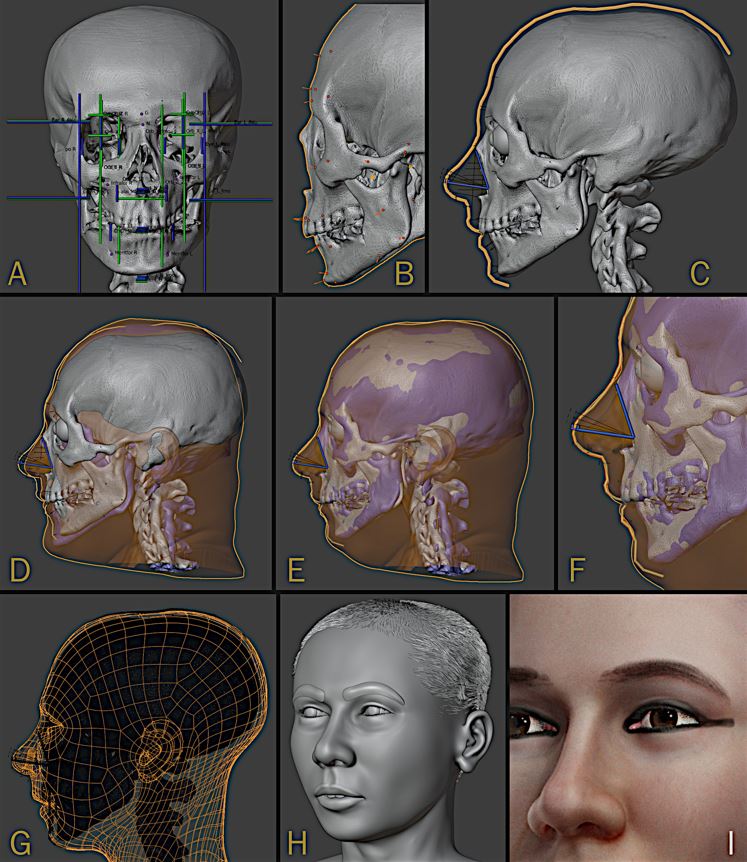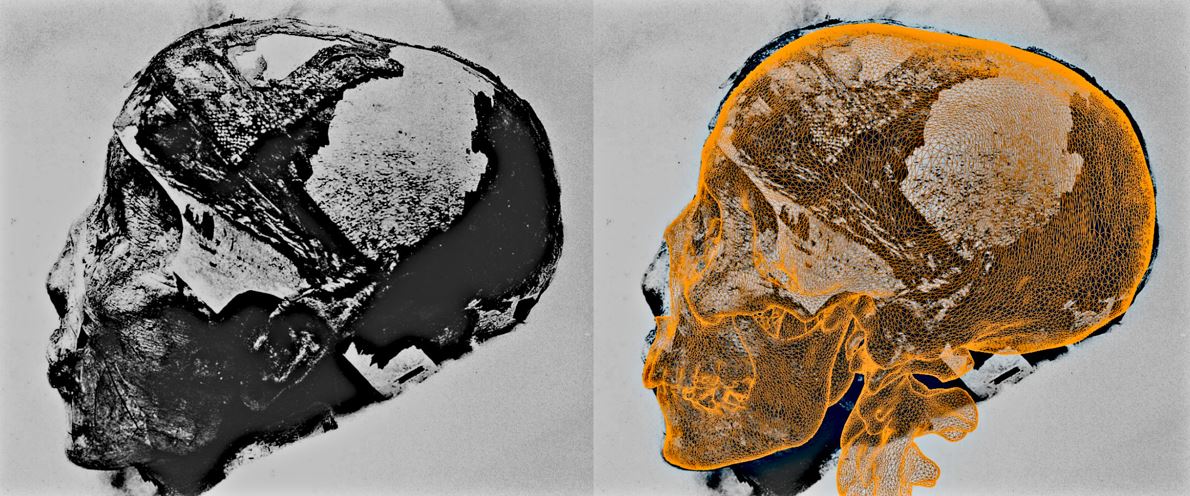
Archaeology, visual and other experts have come up with a modern facial approximation to reconstruct what the ancient Egyptian pharaoh Tutankhamun may have looked like.
While much has been written about the royal youth, who held the throne from about the age of 9 until his death a decade later around 1323 BC, his actual appearance is still a matter of debate.
 The new facial approximation, featuring slight buck teeth and eyeliner on his lower lid, provides a glimpse of what the historical figure may have looked like, revealing new insight into some of the former king’s more peculiar facial characteristics.
The new facial approximation, featuring slight buck teeth and eyeliner on his lower lid, provides a glimpse of what the historical figure may have looked like, revealing new insight into some of the former king’s more peculiar facial characteristics.
“Tutankhamun is of archaeological interest not only because of his world-famous burial treasure, but because he ruled for a decade at an important phase in Egyptian history,” says Dr Michael Habicht, a senior research fellow from Flinders University and co-author of the new research.
King Tut’s father, the revolutionary pharaoh Akhenaten, had discouraged worship of all gods except Aten, the sun disc. But Tut did not follow his father’s ways.
“His reign saw a return to the old gods after his father Akhenaten’s new [Aten] cult had failed and plunged the land on the Nile into chaos,” says Dr Habicht. “Therefore, a forensic facial reconstruction is helpful to get an idea of the appearance of the young king.”
To make the three-dimensional facial approximation of King Tut, an international team of researchers, including Dr Elena Varotto and Associate Professor Francesco Galassi, used existing CT (computed tomography) scans of the mummy’s complete skull. They also referenced X-rays and measurements of the skull taken by archaeologists.
Earlier research had noted that Tutankhamun’s skull was slightly longer than normal. The new investigation found additional evidence for this finding.
While studying the data, the researchers noticed that he had not only a uniquely shaped head but also an exceedingly large brain volume, especially when compared with cadaver skulls whose scans were also available in the research database.
The average man has a brain volume of approximately 1234 cubic cm, whereas the pharaoh’s was 1432 cubic cm.
 “His skull has a particular shape; in our study the measurements showed affinities with skulls that underwent [skull reshaping], but this does not seem to be the case of Tutankhamun, because although it has a peculiar, elongated shape, everything indicates that it is a natural skull,” says study co-researcher Professor Cícero Moraes, a Brazilian graphics expert, in Live Science. “Interestingly, its structure differs from the characteristics of other Egyptian mummies present in our database.”
“His skull has a particular shape; in our study the measurements showed affinities with skulls that underwent [skull reshaping], but this does not seem to be the case of Tutankhamun, because although it has a peculiar, elongated shape, everything indicates that it is a natural skull,” says study co-researcher Professor Cícero Moraes, a Brazilian graphics expert, in Live Science. “Interestingly, its structure differs from the characteristics of other Egyptian mummies present in our database.”
The researchers created two facial approximations. The first was an “objective” grayscale image showing the pharaoh with his eyes closed in a neutral position. The second, a colorised version that offers “the necessary elements for a complete humanisation,” depicts a young man with a shaved head and a dark skin tone wearing eyeliner, as was the style at the time, according to the study.
This is far from the first time that a facial approximation has been made of King Tut. In 1983, forensic artist Betty Pat Gatliff created a reconstruction using a plaster cast of his skull. And in 2005, researchers based in France, the United States and Egypt worked in tandem to create their own separate approximations.
The article, Pharaoh Tutankhamun: a novel 3Ddigital facial approximation (May 2023) by C Moraes, ME Habicht, FM Galassi, E Varotto and T Beaini, was published in the Italian Journal of Anatomy and Embryology (Florence University Press).

